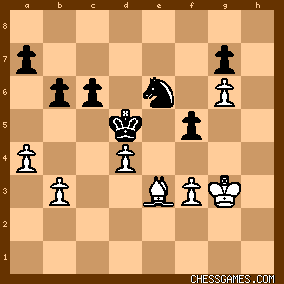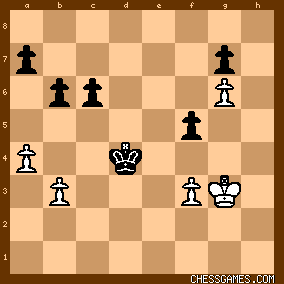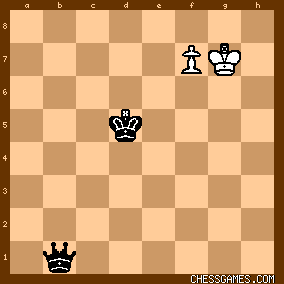Sally Simpson: Hi zydeco,

click for larger viewThe trap mentioned is Black taking on d4 and White takes back 45...Nxd4 Bxd4 46. Kxd4.

click for larger viewGoing into what looks like a lost endgame.
The Keres analysis is pretty instructive.
47. Kf4 b5 48. axb5 cxb5 49. b4 Kc4 50. Kxf5 Kxb4 51. Ke6 a5 52. Kf7 a4 53. Kxg7 a3 and here with White to play.

click for larger viewNo matter where he moves his King, keeping away from f6 or h8 when Black promotes with a check or pins the g-pawn and wins easily. Black can force after the joint promotion an exchange of Queens and the b-pawn wins. but no, Keres continues....
54. Kf7 a2 55. g7 a1=Q 56.g8=Q Qa2+ 57. Kf8 Qxg8+ 58. Kxg8 Kc4 59. f4 Kd5 
click for larger view 60. Kf7! b4 61. f5 b3 62. f6 b2 63. Kg7 b1=Q 64. f7 
click for larger viewThat is a draw.
Keres adds he as Black was unable to calculate all of this accurately but correctly judged the position was better for Black after 45...a5. 
click for larger viewNow the d-pawn is under threat 45...a5 gains a tempo. Keres does indeed take the d-pawn on the next move but calls it a mistake! Saying 46...b5 was much better as now, as in the game White has counter play. | 




